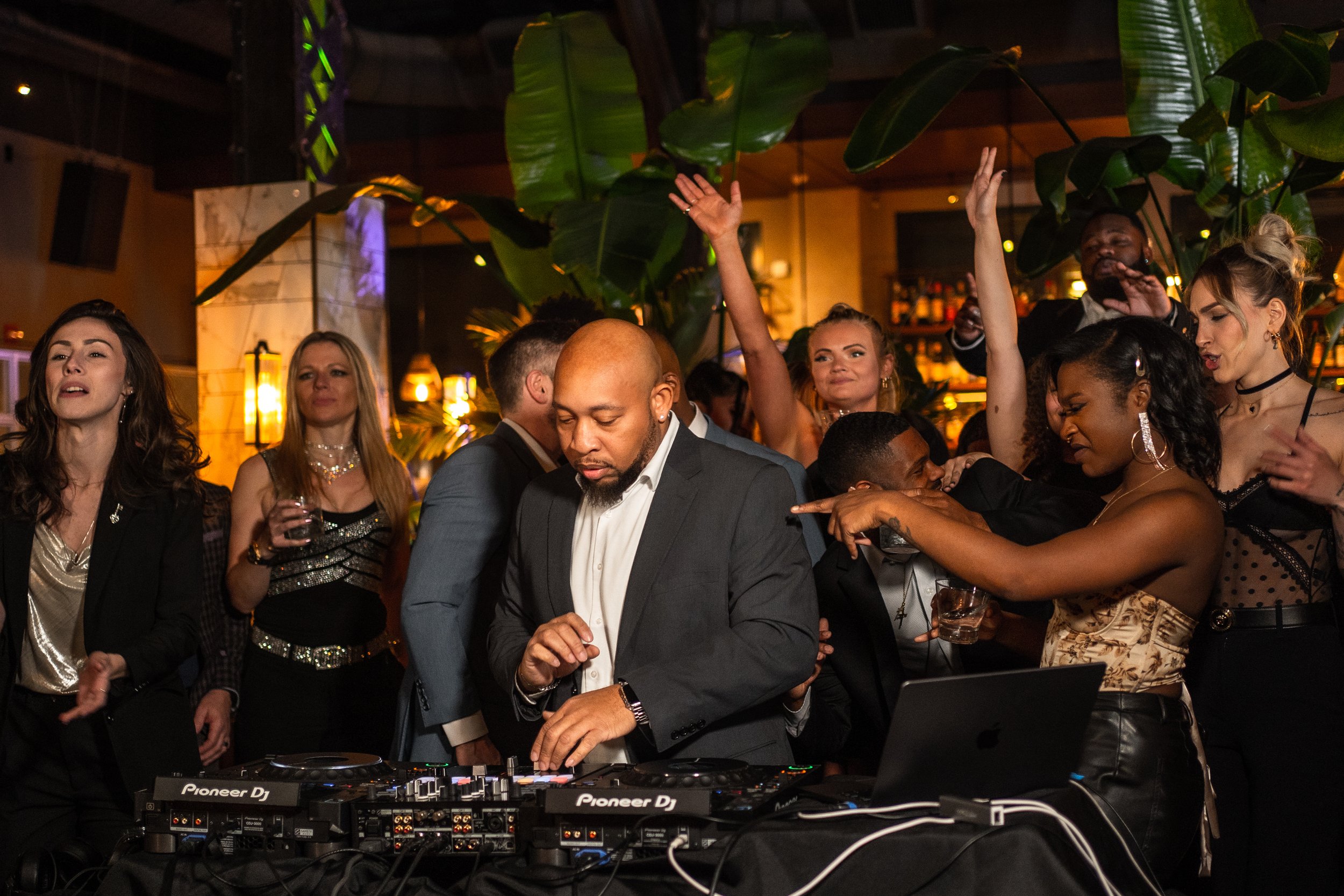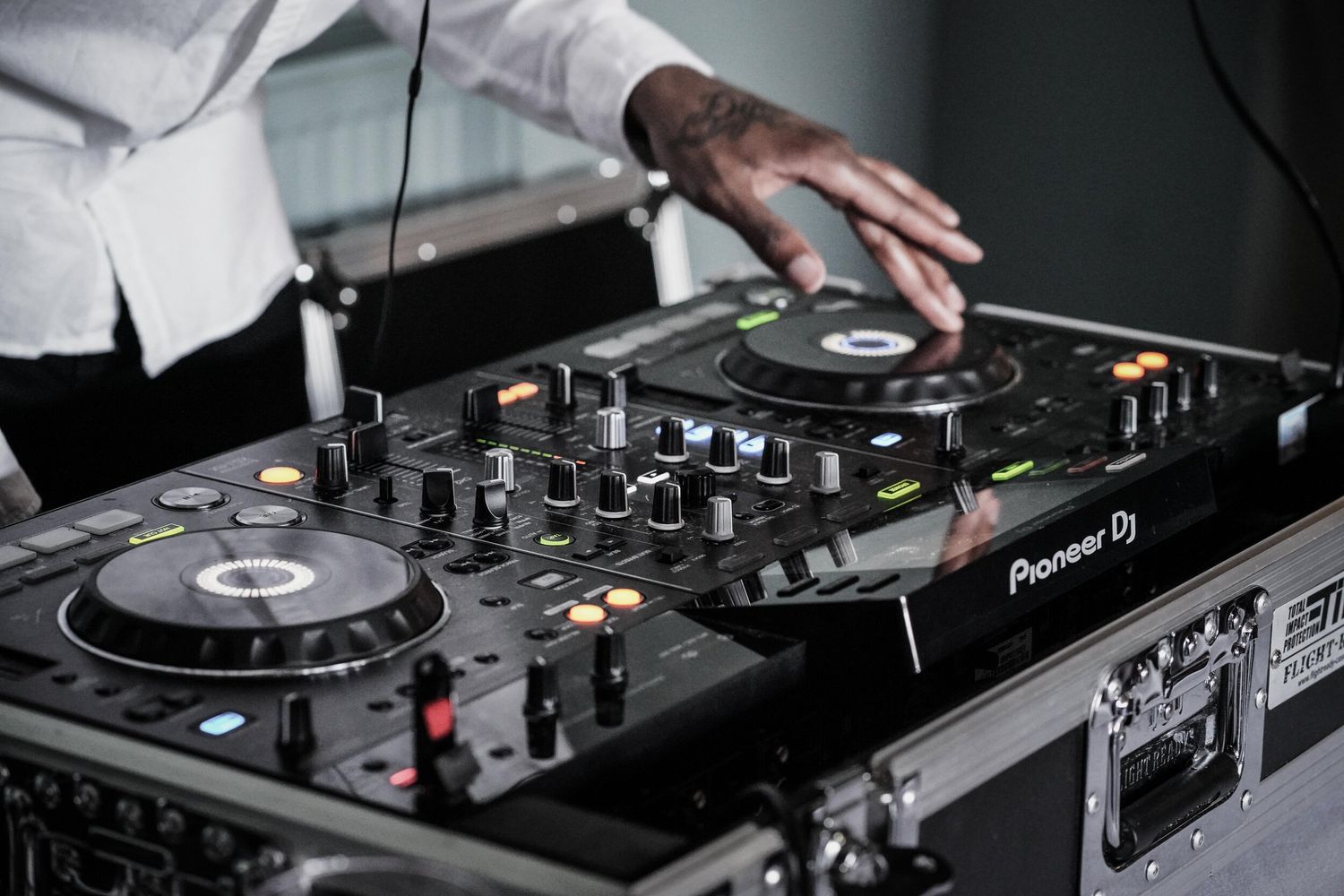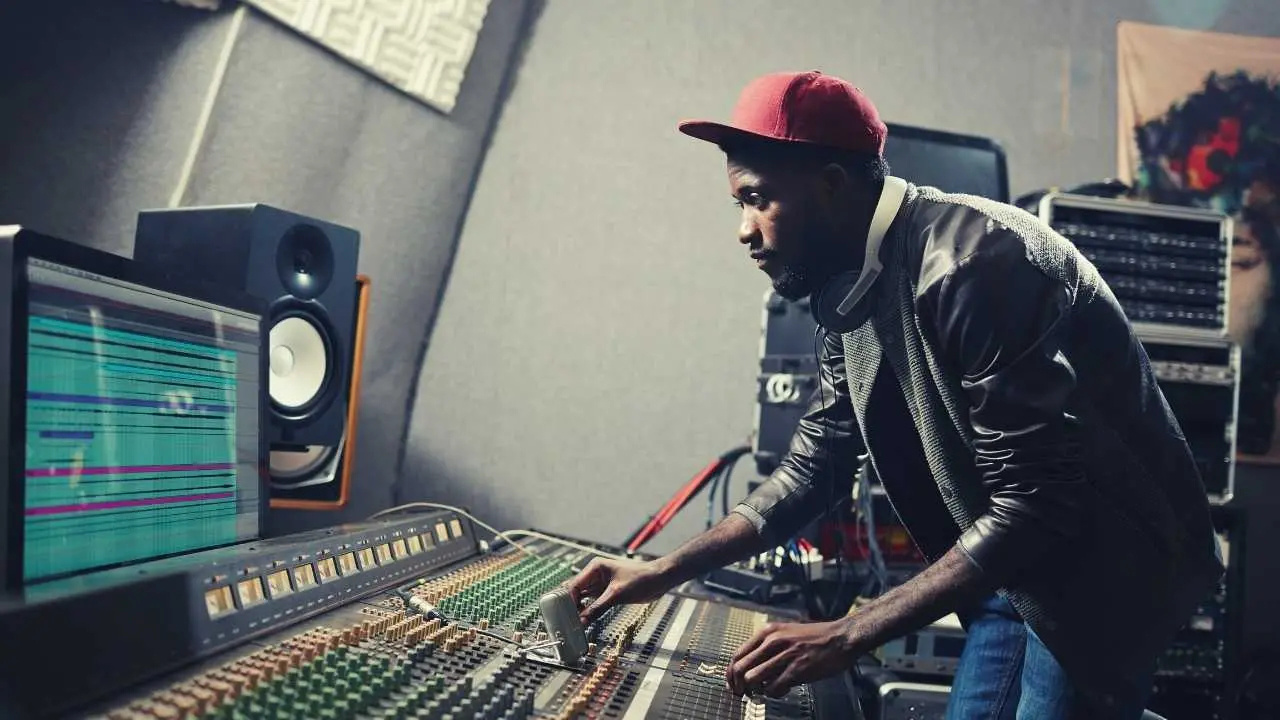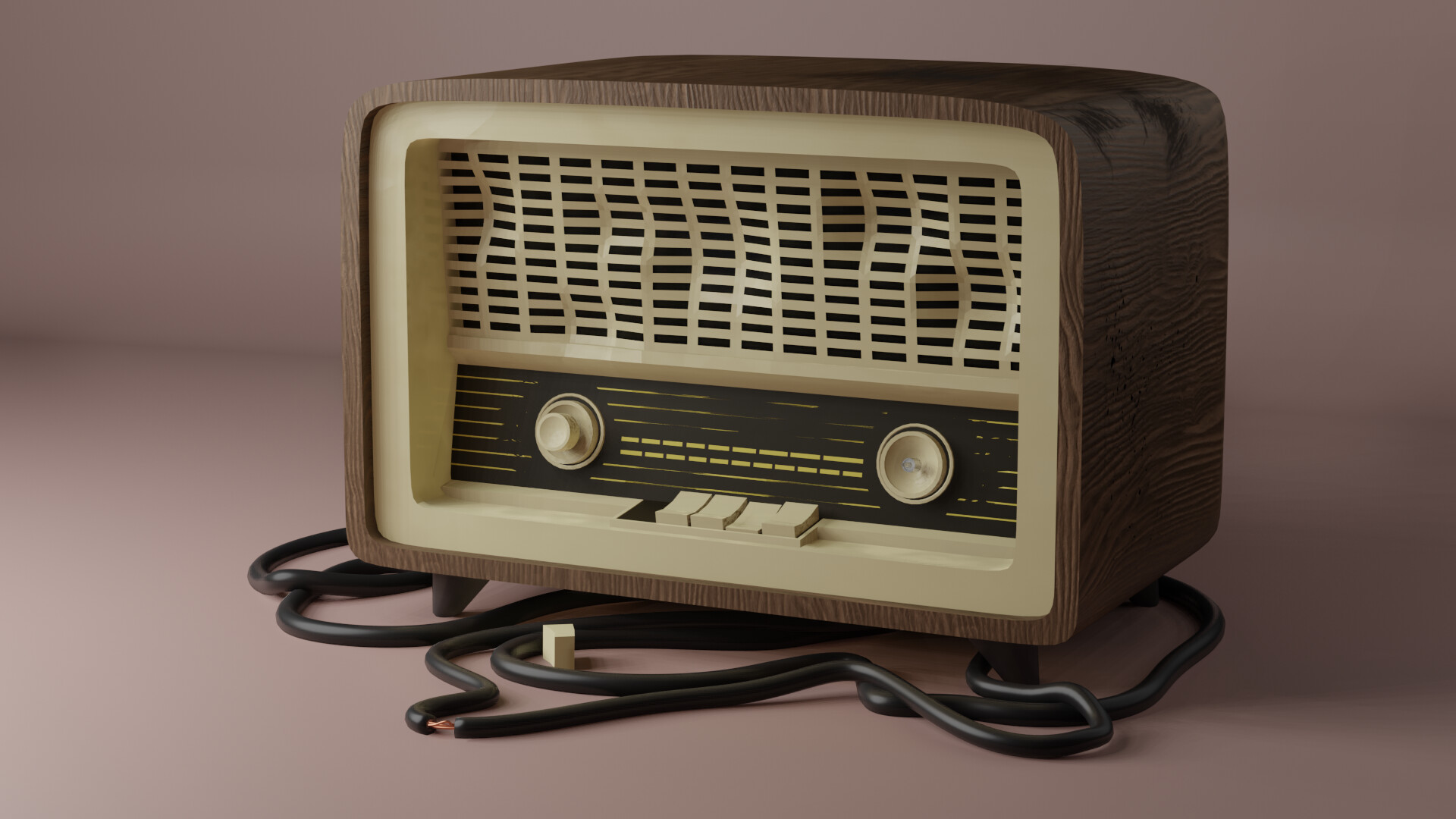Home>Devices & Equipment>Radio>How To Be A Radio DJ


Radio
How To Be A Radio DJ
Modified: March 3, 2024
Learn the essential steps to become a successful radio DJ and create an impact in the vibrant world of radio broadcasting. Gain insights on radio techniques, hosting skills, and music selection.
(Many of the links in this article redirect to a specific reviewed product. Your purchase of these products through affiliate links helps to generate commission for AudioLover.com, at no extra cost. Learn more)
Table of Contents
- Introduction
- Step 1: Understanding the Role of a Radio DJ
- Step 2: Building Your Music Knowledge
- Step 3: Mastering DJ Equipment and Software
- Step 4: Developing Your On-Air Persona
- Step 5: Practicing Mixing and Transition Techniques
- Step 6: Creating Engaging Radio Segments
- Step 7: Networking and Building Relationships in the Industry
- Step 8: Promoting Yourself as a DJ
- Conclusion
Introduction
Welcome to the exciting world of radio! Being a radio DJ is not just about playing music but also about engaging with your audience and creating a memorable experience for them. Whether you aspire to be a host on a popular FM station or an internet radio DJ, this comprehensive guide will walk you through the steps to become a successful radio DJ.
Radio has been a beloved form of entertainment for decades, and despite the rise of streaming services and podcasts, it continues to thrive. People tune in to radio stations to discover new music, listen to their favorite tracks, and enjoy the lively banter of their favorite DJs. As a radio DJ, you have the power to connect with listeners, uplift their spirits, and make a lasting impact.
In this guide, we will cover everything you need to know, from understanding the role of a radio DJ to developing your on-air persona, mastering mixing techniques, creating engaging radio segments, promoting yourself, and more. So, whether you’re an aspiring radio host or an experienced DJ looking to transition to the world of radio, this guide is for you.
It’s important to note that being a radio DJ requires a combination of skills, including music knowledge, technical proficiency, and the ability to connect with your audience. The journey to becoming a successful radio DJ may be challenging, but with passion, dedication, and the right resources, you can make your mark in the industry.
So, let’s dive in and explore the steps you need to take to become a radio DJ.
Step 1: Understanding the Role of a Radio DJ
Before embarking on your journey to become a radio DJ, it’s crucial to have a clear understanding of the role and responsibilities that come with the job. While it may seem like a dream job filled with playing music and chatting with listeners, there is much more to it than meets the ear.
A radio DJ is not only responsible for curating and playing music but also for engaging with the audience, delivering relevant and entertaining content, and maintaining a smooth and enjoyable listening experience. Here are some key aspects to consider when understanding the role of a radio DJ:
- Music curation: As a radio DJ, you’ll spend a significant amount of time selecting music that appeals to your target audience or fits the format of your radio station. This involves having a deep understanding of different genres, staying up-to-date with current music trends, and having an extensive music library.
- Show preparation: A successful radio DJ knows the importance of being well-prepared. This includes planning the structure and content of your show, creating engaging segments, and ensuring a seamless flow between songs and spoken content.
- On-air personality: Being a radio DJ is not just about playing music; it’s about creating a connection with your audience through your personality. Developing a unique and relatable on-air persona is vital in establishing a loyal listener base.
- Engagement with listeners: Interacting with your listeners is an essential part of being a radio DJ. This can involve taking requests, hosting contests or giveaways, and responding to listener feedback and shoutouts.
- Technical skills: Familiarizing yourself with the technical aspects of radio broadcasting is crucial. This includes learning how to operate and troubleshoot equipment, understanding sound processing, and effectively using radio software.
- Adhering to station guidelines: Each radio station has its own set of guidelines and formats that DJs must follow. It’s essential to understand and adhere to these guidelines while adding your own unique flair.
By understanding and embracing these aspects of the role, you’ll be better equipped to excel as a radio DJ. It’s important to remember that being a radio DJ is a combination of artistry, technical skills, and the ability to engage with your audience. With practice and commitment, you can excel in this dynamic and fulfilling profession.
Step 2: Building Your Music Knowledge
As a radio DJ, having a solid foundation in music is essential. Building your music knowledge not only allows you to curate a diverse and engaging playlist but also helps you understand the history, trends, and cultural significance behind different genres and artists. Here are some tips to help you build your music knowledge:
- Listen to a variety of genres: Expand your musical horizons by listening to a wide range of genres. Explore different eras, styles, and sub-genres to develop a well-rounded understanding of music.
- Stay updated with current music: To appeal to a contemporary audience, it’s crucial to be aware of the latest music releases, trends, and popular artists. Stay connected with music charts, streaming platforms, and influential music blogs to discover new tracks and stay up-to-date.
- Read books and articles on music history: Dive deep into the history of music by reading books and articles that cover various genres, movements, and influential musicians. Understanding the evolution of music can provide valuable insights into different styles and their influences.
- Attend concerts and music events: Immerse yourself in the live music experience by attending concerts and music events. This not only allows you to enjoy the performance but also provides an opportunity to discover new artists and genres.
- Engage with the music community: Join online communities, forums, or social media groups dedicated to music. Engaging in discussions with fellow music enthusiasts can broaden your perspective and introduce you to new perspectives and recommendations.
- Learn about music theory and composition: Understanding the foundational principles of music theory and composition can enhance your appreciation for different musical elements and help you create well-crafted playlists and transitions.
- Collaborate with other musicians: Collaborating with other musicians, whether as a DJ or through remixes and mashups, can provide a hands-on experience and help you explore different musical styles and techniques.
Building your music knowledge is an ongoing process. Make it a habit to continuously explore new music, learn about diverse genres, and stay updated with industry news and trends. By doing so, you’ll be able to curate captivating playlists, engage with your audience, and showcase your passion for music as a radio DJ.
Step 3: Mastering DJ Equipment and Software
Mastering the necessary DJ equipment and software is crucial for delivering a seamless and professional performance as a radio DJ. Whether you’re using traditional turntables or digital DJ controllers, here are some essential steps to help you become proficient in using DJ equipment and software:
- Familiarize yourself with the equipment: Take the time to understand the various components of DJ equipment, such as mixers, turntables, controllers, and headphones. Learn their functions and how they work together to create your desired sound.
- Choose the right software: Research and select DJ software that aligns with your needs and preferences. Popular options include Serato DJ, Traktor Pro, and rekordbox. Familiarize yourself with the features and capabilities of the software to leverage its full potential.
- Learn basic mixing techniques: Get acquainted with the basics of beatmatching, blending, and phrasing. These essential skills will allow you to seamlessly transition between songs and create a smooth listening experience for your audience.
- Practice using cue points: Utilize cue points to mark specific sections of a track, allowing you to jump directly to important parts or create creative mixes. Experiment with different cue point placements to enhance your sets and add your unique touch.
- Experiment with effects: Familiarize yourself with the various effects available in your DJ software. Effects such as reverb, flanger, and echo can add depth and creativity to your mixes. Practice using effects sparingly and in a way that enhances the overall sound without overpowering it.
- Explore loop and sample options: Looping and sampling can add variety and interest to your mixes. Experiment with creating loops of different lengths and incorporating samples to add an extra layer of excitement to your sets.
- Practice using hot cues: Hot cues are markers that allow you to quickly jump to specific points in a track. Master the art of setting and triggering hot cues to smoothly navigate through your music library and create dynamic sets.
- Stay updated with software updates: DJ software is often updated with new features and bug fixes. Stay informed about software updates and take the time to familiarize yourself with any changes or improvements.
Remember that mastering DJ equipment and software takes time and practice. Dedicate regular practice sessions to hone your skills, experiment with different techniques, and develop your unique DJ style. The more comfortable you become with your equipment and software, the more confident and creative you will be as a radio DJ.
Step 4: Developing Your On-Air Persona
Developing a compelling on-air persona is essential for connecting with your audience and creating a memorable radio experience. Your on-air persona is the unique personality and style that you bring to the microphone, reflecting your authenticity and building a loyal listener base. Here are some steps to help you develop your on-air persona as a radio DJ:
- Define your target audience: Consider who your target audience is and what kind of radio experience they are seeking. Understanding their demographics, interests, and preferences will help you tailor your on-air persona to resonate with them.
- Be yourself: Authenticity is key when developing your on-air persona. Embrace your true self and let your genuine personality shine through. Listeners appreciate DJs who come across as relatable and genuine.
- Hone your communication skills: Effective communication is crucial for engaging your audience. Practice speaking clearly, articulating your thoughts, and using a tone and style that matches your target audience’s preferences.
- Develop a unique style: Find your signature style that sets you apart from other DJs. It could be a distinct way of delivering jokes, storytelling techniques, or a particular approach to introducing and discussing songs.
- Embrace storytelling: Engage your listeners by incorporating storytelling into your on-air segments. Whether it’s sharing personal anecdotes, interesting music facts, or relatable experiences, storytelling adds depth and connection to your radio shows.
- Inject humor and positivity: A light-hearted and positive on-air persona can brighten your listeners’ day and keep them coming back for more. Inject humor, share uplifting anecdotes, and project an overall positive energy on the airwaves.
- Interact with your audience: Take the time to interact with your listeners by encouraging them to call in, send messages, or participate in contests and discussions. Listen to their feedback, respond genuinely, and make them feel valued and heard.
- Stay informed and versatile: Keep up with current news, entertainment, and pop culture trends to stay relevant and engage your audience. Be versatile in your content, offering a range of topics and segments that cater to different listener interests.
- Continuously evolve: Developing your on-air persona is an ongoing process. Regularly assess your performance, seek feedback from colleagues and listeners, and adapt and evolve your style to keep it fresh and exciting.
Remember, developing your on-air persona is about finding a balance between being authentic and catering to your target audience. Stay true to yourself while also considering what will resonate with your listeners. With time, practice, and self-reflection, you will develop a captivating on-air persona that keeps your audience engaged and coming back for more.
Step 5: Practicing Mixing and Transition Techniques
Mastering mixing and transition techniques is essential for creating smooth and seamless transitions between songs, keeping the energy flowing, and captivating your audience as a radio DJ. With practice and attention to detail, you can elevate your DJ skills and deliver a professional and engaging performance. Here are some techniques to help you improve your mixing and transition skills:
- Beatmatching: Beatmatching involves aligning the beats of two songs to seamlessly transition between them. Practice using the pitch control on your equipment to match the tempo of the incoming song with the playing song.
- Phrasing: Pay attention to the structure and arrangement of songs. Understanding the phrasing of songs allows you to transition at the appropriate moments, such as during a chorus or a breakdown, for a natural and cohesive transition.
- EQ Mixing: Experiment with adjusting the equalizer (EQ) settings to blend the frequency ranges of two songs. This helps maintain a balanced sound and avoids clashes between the bass, mid, and treble frequencies.
- Creative Mixing Techniques: Explore different mixing techniques to add flair and creativity to your transitions. This can include using acapella or instrumental versions of songs, blending different genres, or creating mashups.
- Blend and Crossfade: Utilize the crossfader or volume controls to smoothly fade in and fade out songs. Practice blending the outgoing song with the incoming track to create a seamless transition without any sudden changes in volume or energy.
- Use Transition Tracks: Transition tracks are songs specifically produced to help DJs transition between different styles or tempos. Explore and incorporate transition tracks into your mixes to create smooth transitions with ease.
- Experiment with Effects: Effects can be used creatively to enhance your transitions. Experiment with using effects like echo, filter, or flanger during transitions to add excitement and variation.
- Practice with Different BPMs: Challenge yourself by practicing mixing songs with different tempos. This will help you develop the ability to seamlessly blend tracks with varying BPMs and create interesting transitions.
- Record and Analyze Your Mixes: Record your practice sessions or live sets and listen back to analyze your transitions. Take note of what worked well and areas that need improvement. This self-reflection will help you refine your techniques and identify areas for growth.
Remember, the key to mastering mixing and transition techniques is practice and experimentation. Dedicate regular time to refine your skills, try new techniques, and develop your own unique style. With time, precision, and a deep understanding of song structures and mixing principles, you’ll be able to deliver seamless transitions and captivating mixes that leave a lasting impression on your listeners.
Step 6: Creating Engaging Radio Segments
An essential aspect of being a radio DJ is creating engaging and captivating radio segments that keep your audience entertained and coming back for more. Well-planned and thoughtfully executed segments can make your radio shows memorable and help you connect with your listeners on a deeper level. Here are some tips to create engaging radio segments:
- Plan your segments: Take the time to plan and structure your segments before going on air. Determine the main theme or topic, brainstorm ideas, and outline the flow and progression of the segment.
- Know your audience: Understand what interests and engages your target audience. Tailor your segments to their preferences and create content that resonates with them.
- Research and prepare: Thoroughly research the topics you plan to discuss in your segments. Gather interesting facts, anecdotes, and relevant information to provide valuable insights and keep your audience engaged.
- Add variety: Mix up the content of your segments to keep your show dynamic and interesting. Incorporate interviews, guest features, listener call-ins, games, or trivia to add variety and surprise to your segments.
- Use storytelling techniques: Weave storytelling into your segments to captivate your audience. Start with a compelling hook, use descriptive language, build suspense, and evoke emotions to create a narrative that keeps listeners engaged.
- Keep it concise and focused: Avoid rambling or going off on tangents during your segments. Be concise and focused, delivering the main points or story in an engaging and impactful manner.
- Infuse personality: Inject your unique personality into your segments. Let your enthusiasm, humor, and passion shine through to create a genuine connection with your audience.
- Encourage participation: Engage your listeners by encouraging them to participate in your segments. Pose questions, invite them to share their thoughts or experiences, and create interactive elements that involve audience participation.
- Utilize soundbites and audio elements: Incorporate soundbites, audio clips, or relevant music into your segments to enhance the listener experience. These elements can help illustrate your point, add context, or create a mood.
- Solicit feedback: After each segment, encourage your listeners to provide feedback. This can be done through social media, a dedicated feedback line, or live call-ins. Actively listen to their feedback and use it to refine and improve future segments.
Remember, creating engaging radio segments is about delivering valuable content, captivating stories, and genuine interactions with your audience. Experiment with different formats, styles, and topics to find what works best for you and your listeners. The more you refine your segment creation skills, the more enjoyable and memorable your radio shows will become.
Step 7: Networking and Building Relationships in the Industry
Networking and building relationships in the radio industry is crucial for advancing your career as a radio DJ. By establishing connections with industry professionals, fellow DJs, and influential individuals, you can open doors to new opportunities, gain valuable insights, and expand your reach as a radio personality. Here are some tips to help you effectively network and build relationships in the industry:
- Attend industry events: Attend conferences, conventions, and industry events where you can meet fellow DJs, industry professionals, and potential collaborators. These events provide valuable networking opportunities and allow you to stay up-to-date with the latest industry trends.
- Join professional organizations: Become a member of professional radio organizations or associations. These groups often host networking events, provide educational resources, and offer platforms to connect with industry professionals.
- Utilize social media: Engage with the radio community on social media platforms. Follow and interact with DJs, stations, and industry influencers. Share your work, participate in discussions, and build a strong online presence to showcase your skills and connect with like-minded individuals.
- Acknowledge and support others: Show support for your fellow DJs and industry professionals by attending their events, sharing their content, and collaborating on projects. Building a reputation as a supportive and collaborative individual can lead to reciprocal opportunities and positive industry relationships.
- Volunteer or intern at radio stations: Gain hands-on experience and make connections by volunteering or interning at local radio stations. This allows you to work alongside professionals, learn from them, and potentially receive recommendations or referrals.
- Attend workshops and training sessions: Take advantage of workshops, seminars, or training sessions offered by radio stations or industry experts. These learning opportunities provide a chance to network with professionals and gain career-enhancing knowledge and skills.
- Reach out to mentors: Seek guidance from experienced professionals in the industry by reaching out to potential mentors. Connect with DJs or radio personalities you admire and respectfully ask for their advice or feedback. Their insights can be invaluable in shaping your career.
- Collaborate with others: Collaborate with other DJs, musicians, or content creators to expand your network and reach new audiences. Joint projects can provide exposure and create opportunities for cross-promotion.
- Stay connected: Keep in touch with your industry connections by sending occasional updates, sharing relevant articles or projects, or congratulating them on their achievements. Maintaining relationships requires effort and regular communication.
- Be professional and reliable: Build a reputation as a reliable and professional individual. Meet deadlines, honor commitments, and conduct yourself with integrity. Your professionalism will be noticed and appreciated by industry professionals.
Remember, networking is a long-term endeavor that requires authenticity, persistence, and genuine interest in building relationships. By actively engaging with the industry and nurturing connections, you can create a supportive network that propels your career forward as a successful radio DJ.
Step 8: Promoting Yourself as a DJ
Promoting yourself as a DJ is crucial for gaining visibility, attracting opportunities, and expanding your fan base. Effective self-promotion allows you to showcase your skills, style, and unique personality to industry professionals and potential listeners. Here are some strategies to help you promote yourself as a DJ:
- Create an online presence: Establish a professional online presence by building a website or a portfolio showcasing your work, bio, and contact information. Utilize social media platforms to share your mixes, engage with your followers, and promote upcoming events or appearances.
- Produce high-quality mixes and content: Create and share high-quality mixes, remixes, or DJ sets that exemplify your skills and showcase your unique style. Use platforms like SoundCloud, Mixcloud, or YouTube to distribute your content and engage with listeners.
- Curate playlists and share music: Create curated playlists that reflect your taste and style. Share these playlists via online platforms, music streaming services, or your website. Regularly update these playlists to keep them fresh and relevant.
- Collaborate with other artists: Collaborate with musicians, vocalists, or other DJs to create original tracks, remixes, or joint performances. Collaborations help you tap into new audiences and expand your reach through cross-promotion.
- Approach radio stations and podcasts: Reach out to local radio stations or relevant podcasts to inquire about guest appearances or spots in DJ lineups. Demonstrate your value and unique style to show why you would be a great fit for their programs.
- Participate in DJ competitions: Enter DJ competitions to showcase your skills and gain exposure. Winning or placing in competitions can attract attention from industry professionals and provide opportunities for recognition.
- Attend networking events: Be present at industry events, DJ conferences, or music festivals. Network with fellow DJs, industry professionals, and potential collaborators. Carry business cards or promotional materials to give out to interested individuals.
- Seek media coverage: Reach out to local music publications, blogs, or online magazines to introduce yourself and offer to contribute content or be featured in an interview. Collaborating with media outlets can help increase your visibility and credibility.
- Utilize social media advertising: Consider investing in social media advertising to reach a wider audience and target specific demographics. Platforms like Facebook and Instagram offer advertising tools that allow you to promote your DJ brand to relevant users.
- Engage with your audience: Interact with your fans and followers through social media, respond to messages and comments, and show appreciation for their support. Building a loyal and engaged fan base can lead to word-of-mouth promotion and increased exposure.
Remember, self-promotion is an ongoing effort that requires consistency, creativity, and adaptability. Continuously seek new promotional opportunities, monitor your progress, and adjust your strategies accordingly. With a strong promotional strategy, you can elevate your visibility as a DJ and attract exciting new opportunities in the industry.
Conclusion
Congratulations! You have now gained a comprehensive understanding of what it takes to become a successful radio DJ. This guide has walked you through the essential steps, from understanding the role of a radio DJ to building your music knowledge, mastering DJ equipment, developing your on-air persona, practicing mixing techniques, creating engaging radio segments, networking within the industry, and promoting yourself as a DJ.
Becoming a radio DJ is a journey that requires passion, dedication, and continuous learning. Through this process, you will refine your skills, develop your unique style, and make meaningful connections within the industry. Remember to stay true to yourself, embrace authenticity, and consistently engage with your audience to create a lasting impact.
As you embark on your radio DJ career, it’s important to approach each step with enthusiasm and an openness to growth. Seek out opportunities to expand your musical knowledge, refine your technical skills, and connect with fellow DJs and industry professionals. By continuously challenging yourself, experimenting with new techniques, and pushing the boundaries of your creativity, you can stand out in the dynamic world of radio broadcasting.
Finally, remember that success as a radio DJ is not solely measured by fame or fortune, but by the joy and satisfaction you bring to your listeners. Aim to touch the hearts and minds of your audience by curating memorable playlists, delivering engaging content, and consistently striving for excellence.
So, go forth and pursue your dreams of becoming a radio DJ! Embrace the challenges, learn from each experience, and let your passion for music shine through. With dedication, perseverance, and the knowledge you have acquired, you are well on your way to making waves in the exhilarating and rewarding world of radio.











